Making rich, flaky homemade cream scones with a tender crumb texture is easy with this basic scone recipe that uses a simple recipe ratio. Customize the scones with your choice of flavorings and mix-ins to create a variety of options that are better than a bakery!
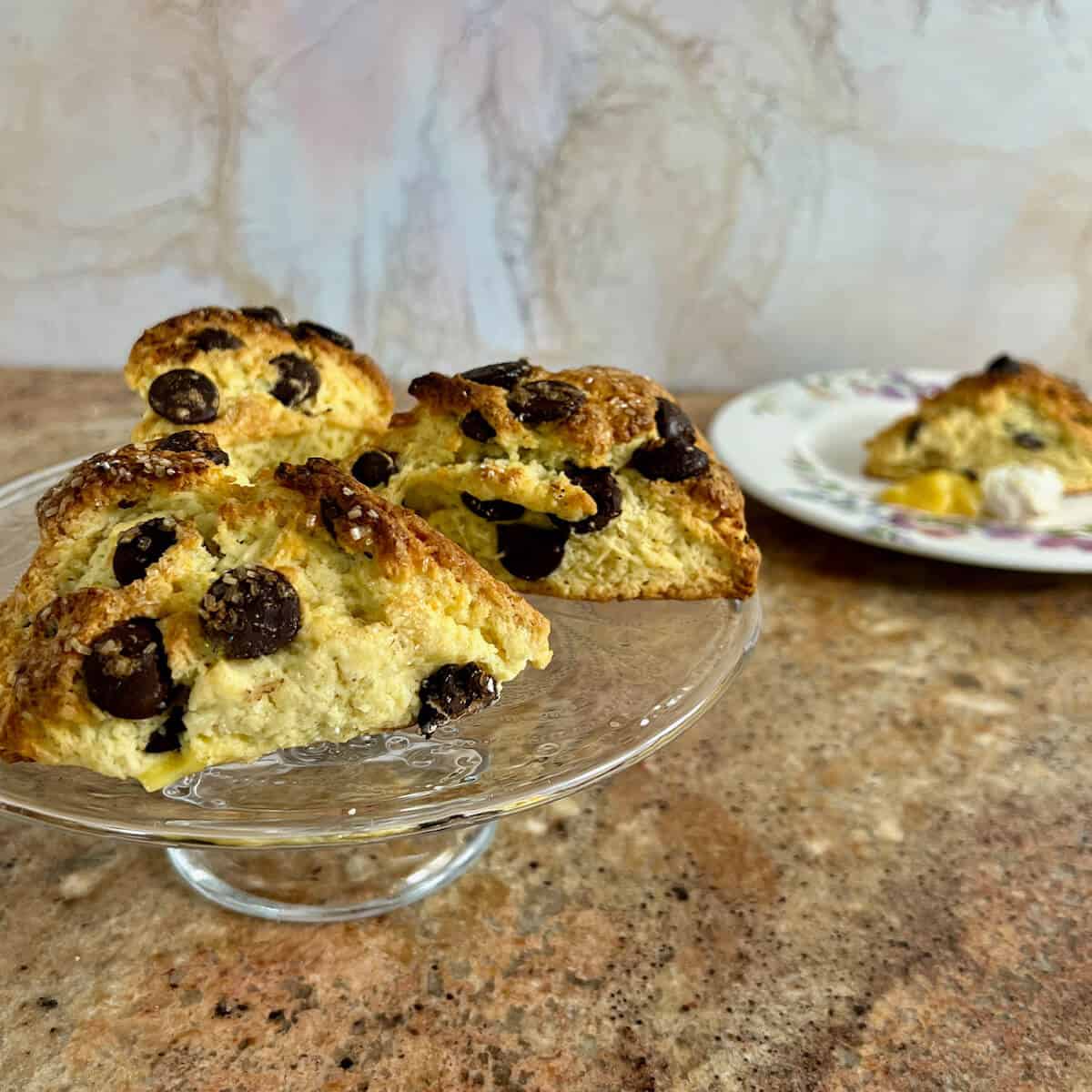
Jump to:
Why this recipe works
- Rich and flaky scones with just the right amount of sweetness and a tender crumb texture
- A cream scone recipe that can be easily customized
- Use a recipe ratio so that you can scale the recipe up or down as needed
I've been taking my daughters for afternoon tea on their birthdays since they were each 5 years old, and that's upwards of 25 years now. I want to have a "Mommy Date" to make each feel special on her special day. That, and I love the afternoon tea traditions and need an excuse to go myself!
One of the best parts of afternoon tea (besides the cucumber sandwiches, which I love) are the cream scones. And while going out is always fun, learning how to make scones at home is easier than you think!
With a cream scones recipe at hand, you can vary the flavorings and mix-ins to make a variety of scones to suit your whims. They will reflect your creativity and imagination, and will be better than what you find in a bakery.
And if you do go out for an afternoon tea, maybe you can compare notes and get even more fresh ideas!
Recipe Ingredients
You'll need the following ingredients to make this cream scones recipe:
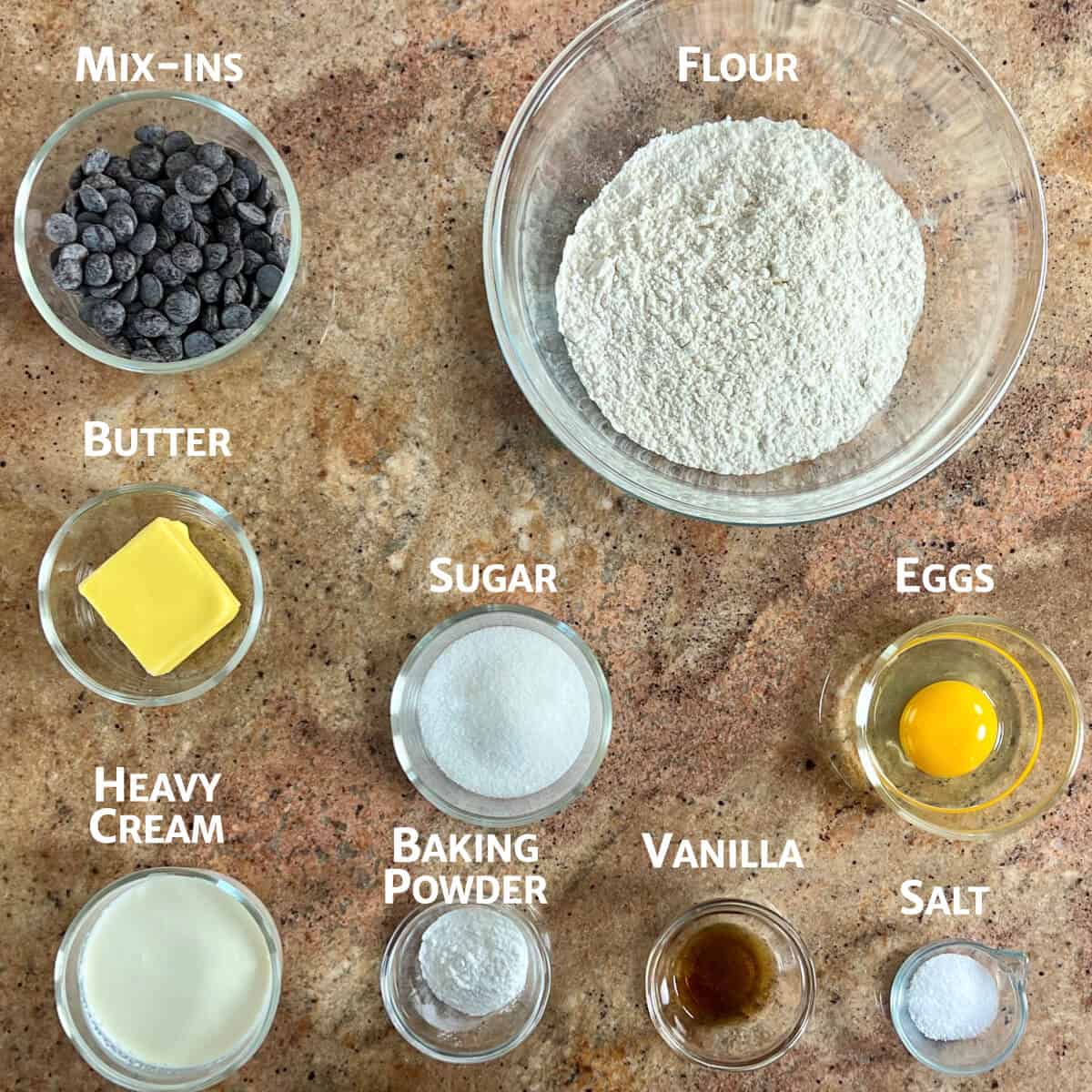
Ingredient Notes
The basic ingredients for cream scones don't vary a whole lot: all-purpose flour, heavy cream, butter, sugar, baking powder, an egg, and salt.
Butter: How you cut up your butter isn't as important as keeping it cold. Generally I'll grate frozen butter on a box grater before cutting it into the flour mixture. You can also cut chilled butter into small ½-inch cubes. Either way, make sure the butter is well chilled before cutting it into the flour mixture.
Some cream scones recipes use more butter than the 3 : 1 : 2 recipe ratio. For this recipe, you can add another 2 tablespoons of butter for more richness if you'd like.
Baking powder: This scone recipe uses 1 tablespoon of baking powder to insure you'll have tall, tender scones. Don't substitute baking soda as the scones will have a metallic taste to them.
Flavorings, mix-ins, and toppings: Optional ingredients include any flavorings (like vanilla extract), mix-ins (like chocolate chips), and toppings (like coarse sugar). If you want to glaze your scones, use powdered sugar plus some liquid that complements the flavor of your scones.
See the recipe card for a full list of ingredients and measurements.
Flavoring options for scones
Flavoring options are where the creativity lies. Have fun with it! Here are some ideas for what you can use:
- Flavored liquids (instead of heavy cream): Buttermilk, eggnog, pumpkin, applesauce, or a non-dairy milk alternative
- Mix-ins: Chocolate chips (or other flavored chips), dried fruit, finely chopped nuts (toasted if desired), or even sprinkles
- Extracts (in addition to or instead of the vanilla extract): ¼ teaspoon almond, mint, orange, lemon, or Fiori di Sicilia (orange-vanilla) extracts
- Toppings: Coarse sugar adds a nice crunch to the scones, but it's not strictly necessary. You can vary the toppings with other things like sprinkles or chopped nuts
For a glaze, combine powdered sugar with milk or cream, or choose a flavored liquid to complement your other ingredients. Or, prepare a thicker, richer glaze than the normal powdered sugar version, like with these Maple Walnut Scones: Heat 1 tablespoon unsalted butter and your flavored liquid of choice together in a small saucepan over low heat, whisking occasionally. Once the butter has melted, remove from heat and whisk in the sifted powdered sugar.
Scones also can be savory rather than sweet, and will be like enriched biscuits. Just omit the sugar and vanilla, use a complementary liquid like buttermilk or broth instead of heavy cream, and use mix-ins and/or toppings like grated cheese, herbs, or bacon bits.
How to make cream scones
Step 1: Make the dough
In a large bowl, combine the flour, sugar, baking powder, and salt (photo 1).
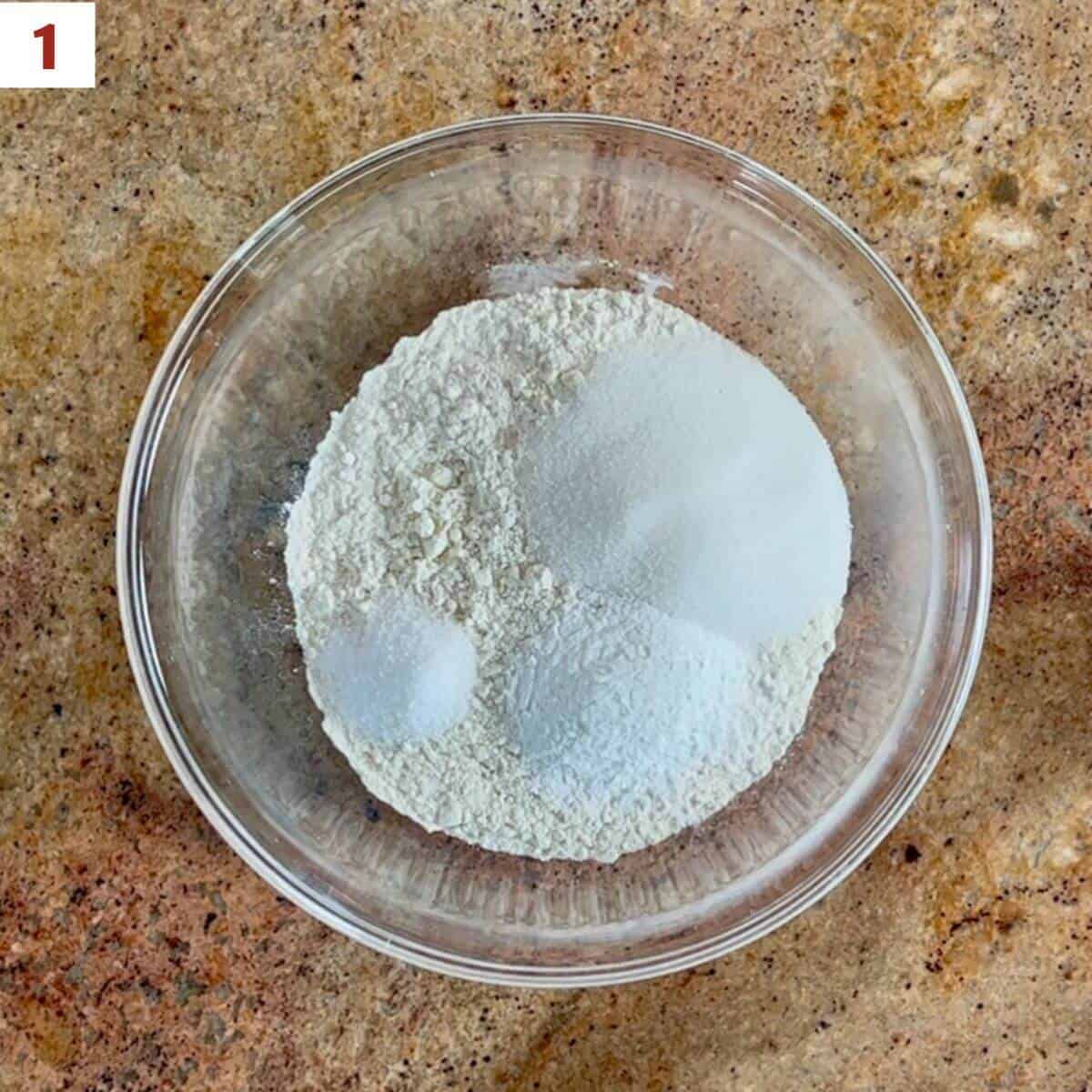
Toss the butter into the flour mixture to coat, then use a pastry blender, two forks, or your hands to work the butter into the flour until coarse, pea-sized crumbs appear (photo 2). Don't overdo this step as you don't want the butter to warm up and mix completely into the flour.
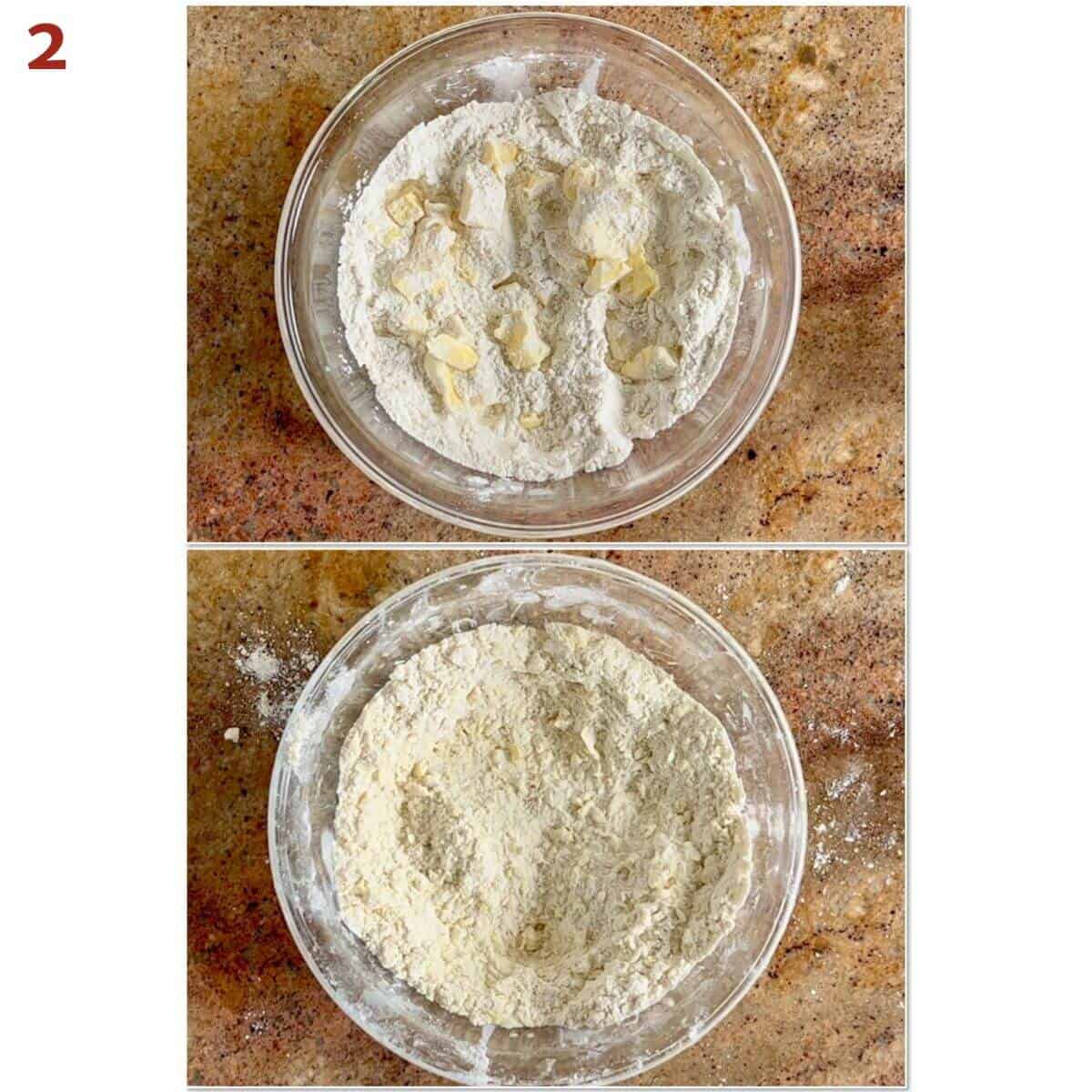
In a small bowl, whisk together the heavy cream, egg, and the flavoring extract, if using (photo 3).
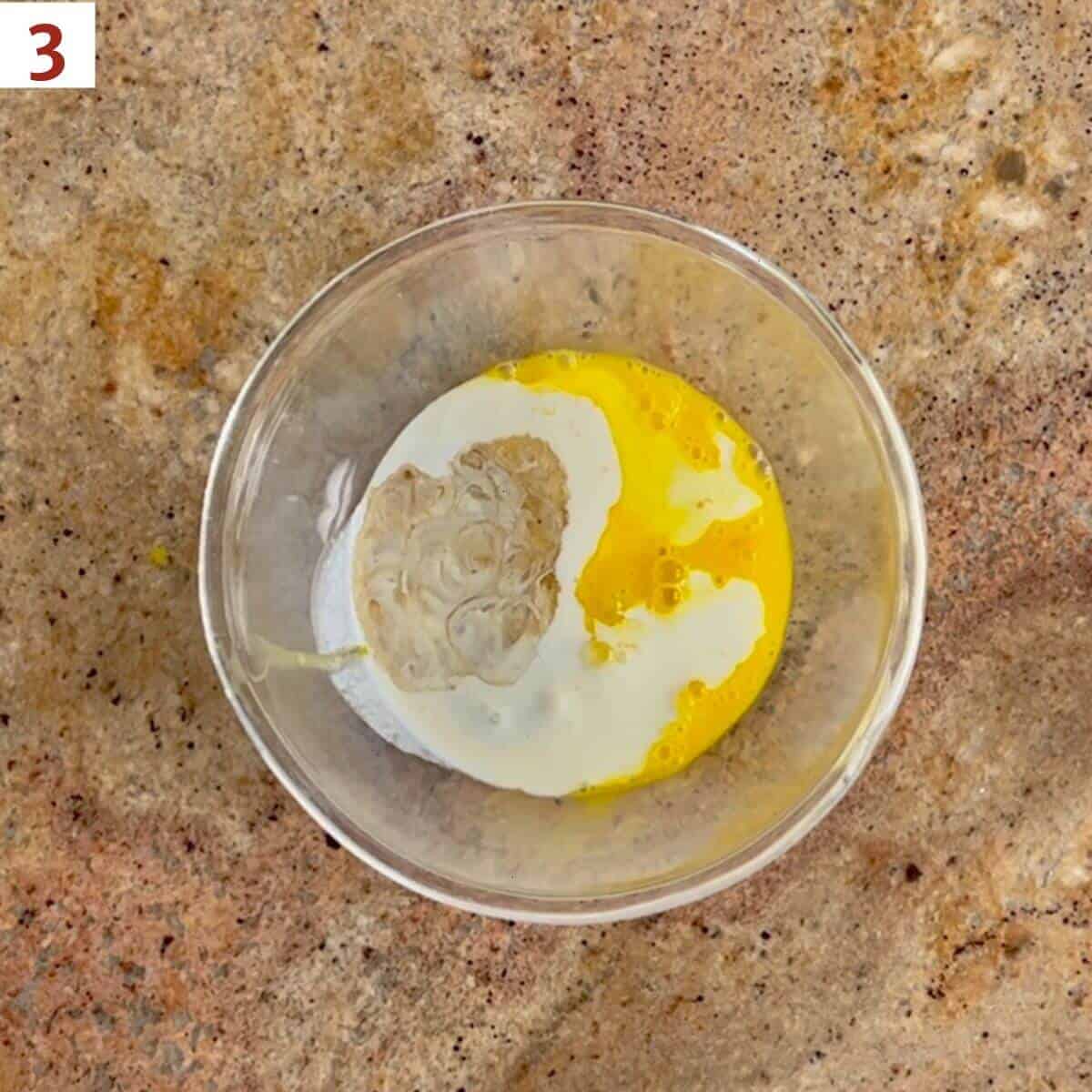
Slowly add the heavy cream mixture to the flour mixture and mix until the dough just holds together (photo 4). Using a bowl scraper will help to combine the dough in the bowl without your hands warming up the butter, plus you can see any crumbs at the bottom that still need to be mixed in.
You have to be flexible about the amount of liquid to add to the flour mixture as the actual amount will depend on the humidity of the day. Squeeze a small amount of dough between your fingers and if it is very crumbly, add more liquid, 1 tablespoon at a time (2 tablespoons maximum). If the dough is too wet, you can knead in 1 tablespoon of flour when you turn out the dough. Don't over-mix the dough - you want to keep that butter cold and separate from the flour.
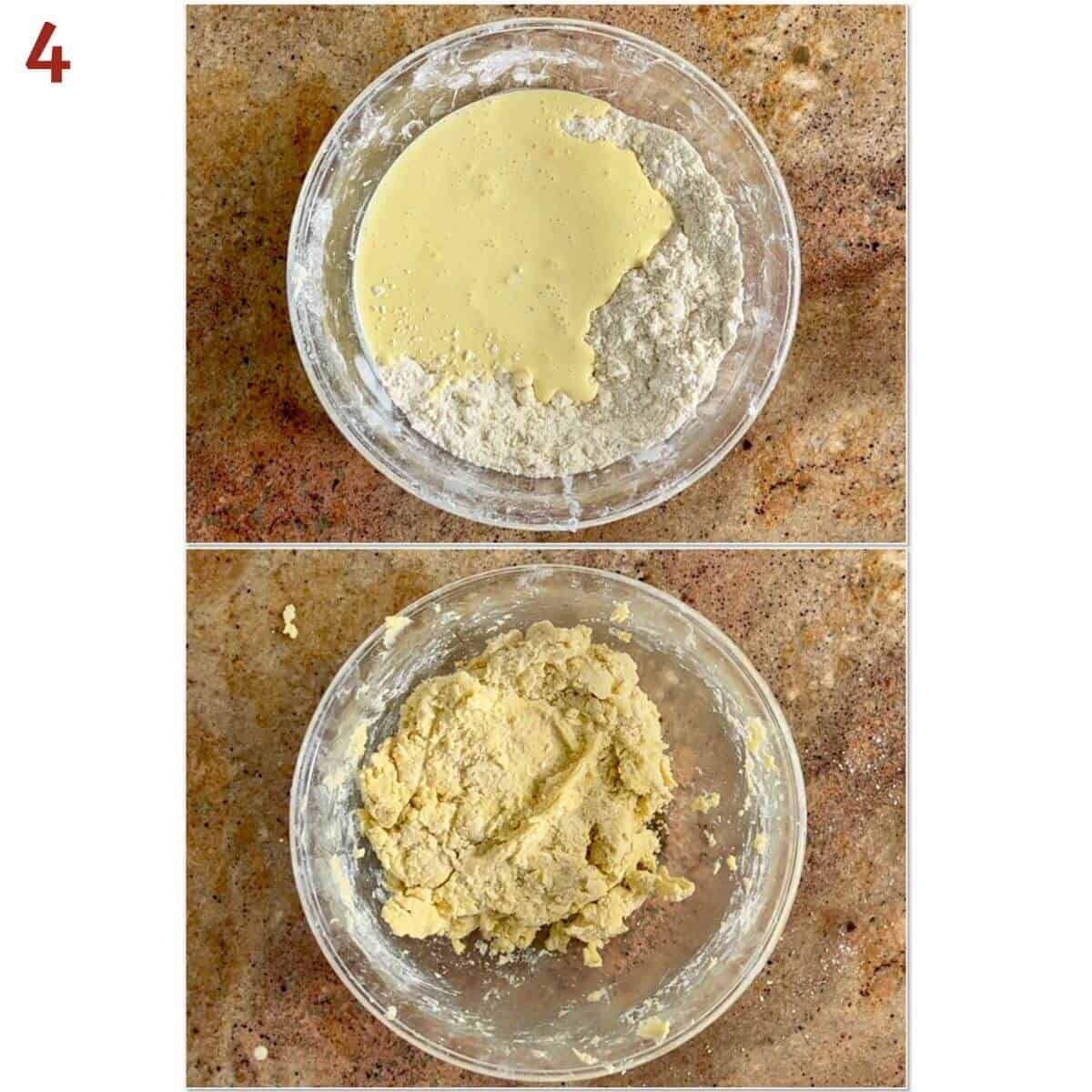
Step 2: Fold in any mix-ins
Use the bowl scraper to push the dough into a ball in the bowl, then turn the dough out onto a lightly floured surface and shape it into a rough square about 1-inch high.
If you're adding in a mix-in (like with these Chocolate Chip Cream Scones), place a few pieces on the top of the disk, then fold the dough over them. Flatten the dough and reshape into a disk (photo 5).
Do this "fill and fold" method a few times until you have enough layers of your mix-in incorporated into the dough. This method is similar to how to fold in mix-ins for bread dough, too.
Gather the dough, and flatten it into a 6-inch disk (if you want square scones, shape the dough into a rectangle with the short side about 4-inches long). Use a bench scraper to release the dough, if needed. Cover with plastic wrap, and refrigerate the dough at least 30 minutes or up to overnight.
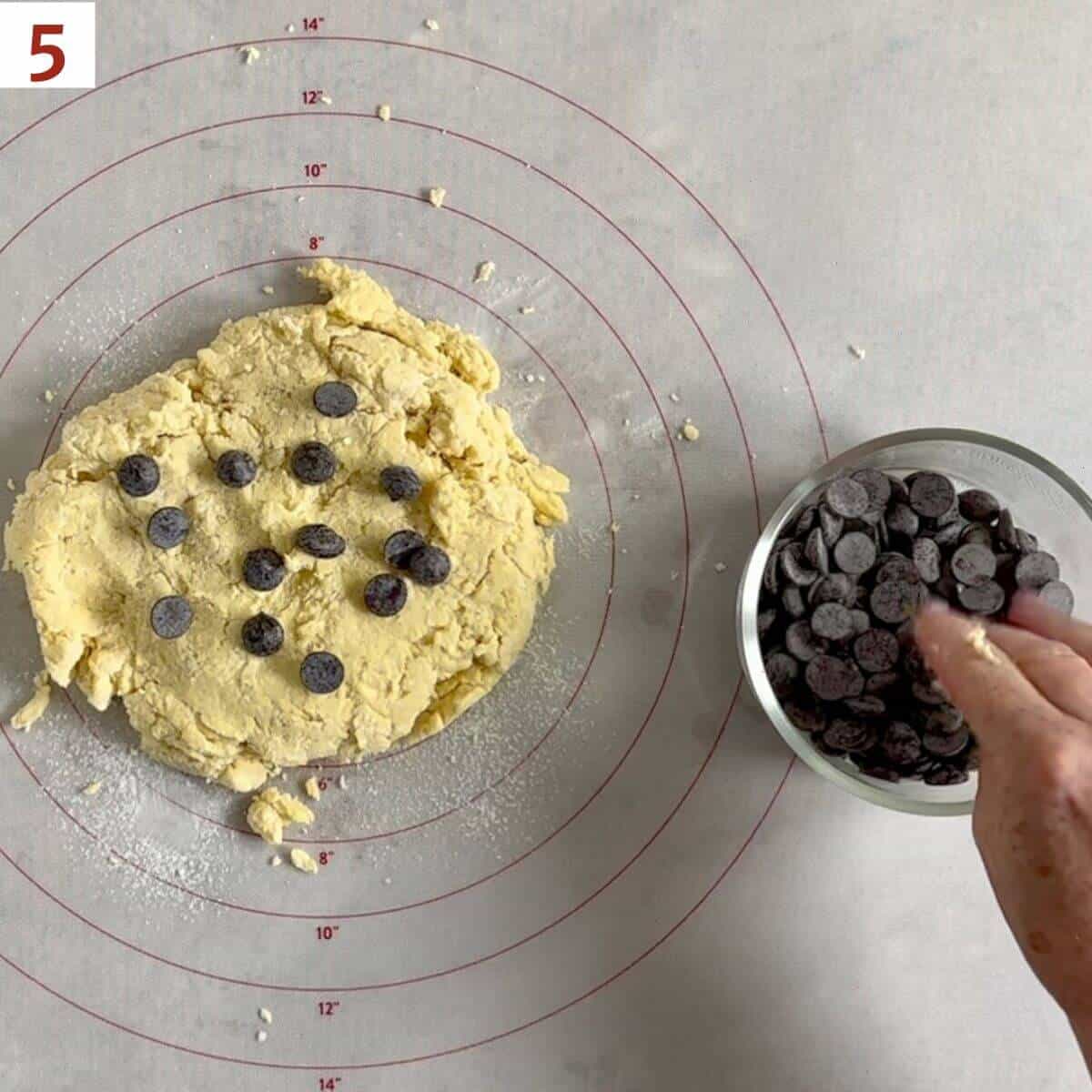
Step 3: Portion the dough
Once the dough is chilled, you have your choice of how to shape the scones:
- For wedge-shaped scones: Roll out the disk into an 8-inch circle, then use the bench scraper to cut the disk into 8 wedges (photo 6).
- For round scones: Roll out the disk to a height of about ¾ inches. Use a 3-inch round cookie cutter to cut out rounds (gather, press, and cut the leftover dough again as needed, but hopefully not more than 2 times).
- For square scones: Roll out the dough into a 12- by 4-inch rectangle, then cut into twelve 2-inch squares.
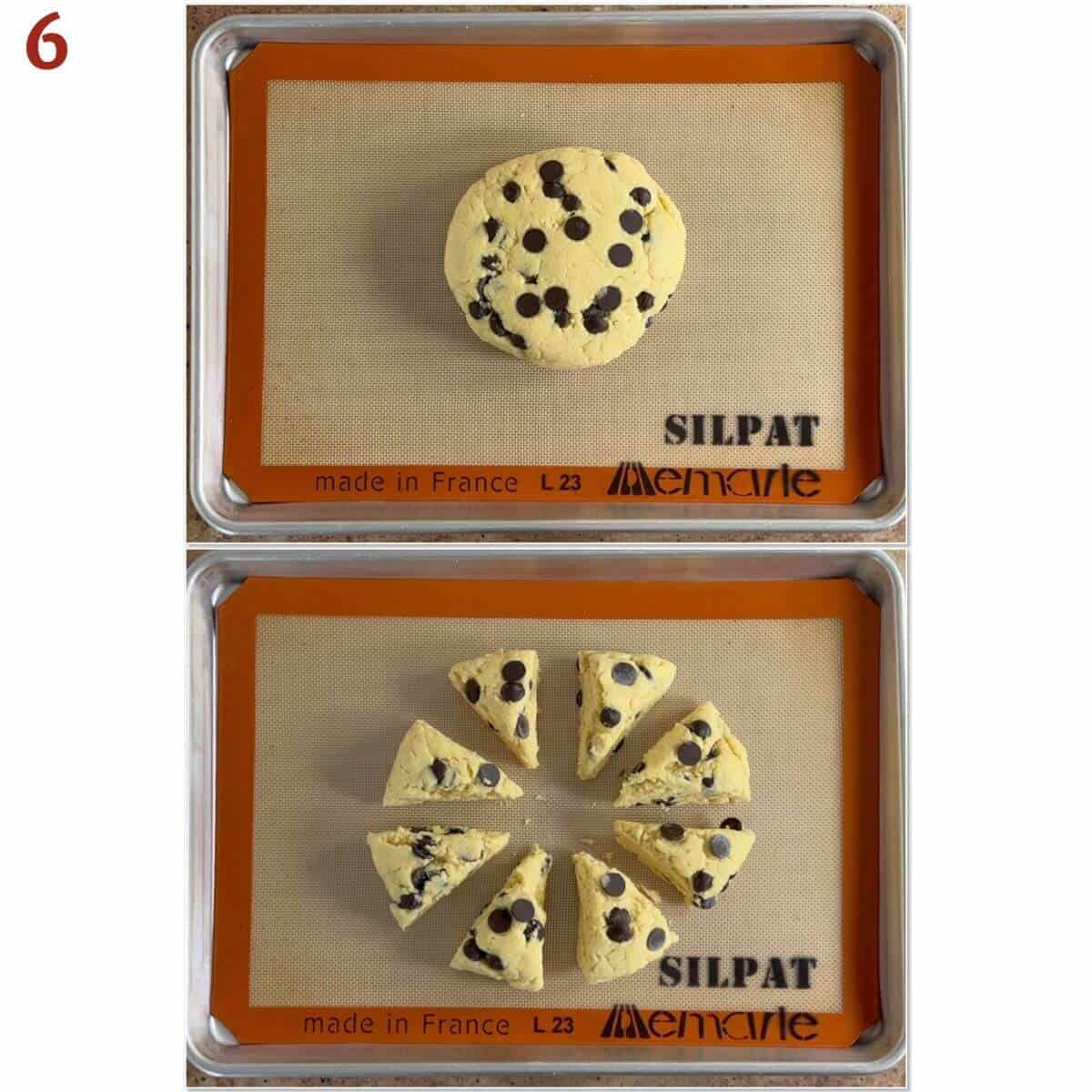
Step 4: Bake the scones
Place the scones about 2-inches apart on a half baking sheet pan covered in a Silpat silicone mat or parchment paper. Press in any reserved mix-ins on the tops of the scones. Brush the tops of each scone with heavy cream with a pastry brush and sprinkle on some coarse sugar.
Bake the scones at 400°F for about 18 to 23 minutes or until golden brown (photo 7). Remove from the oven and cool the scones on the baking pan for 2 minutes, then move to a cooling rack. Allow to cool for 10 to 15 minutes.
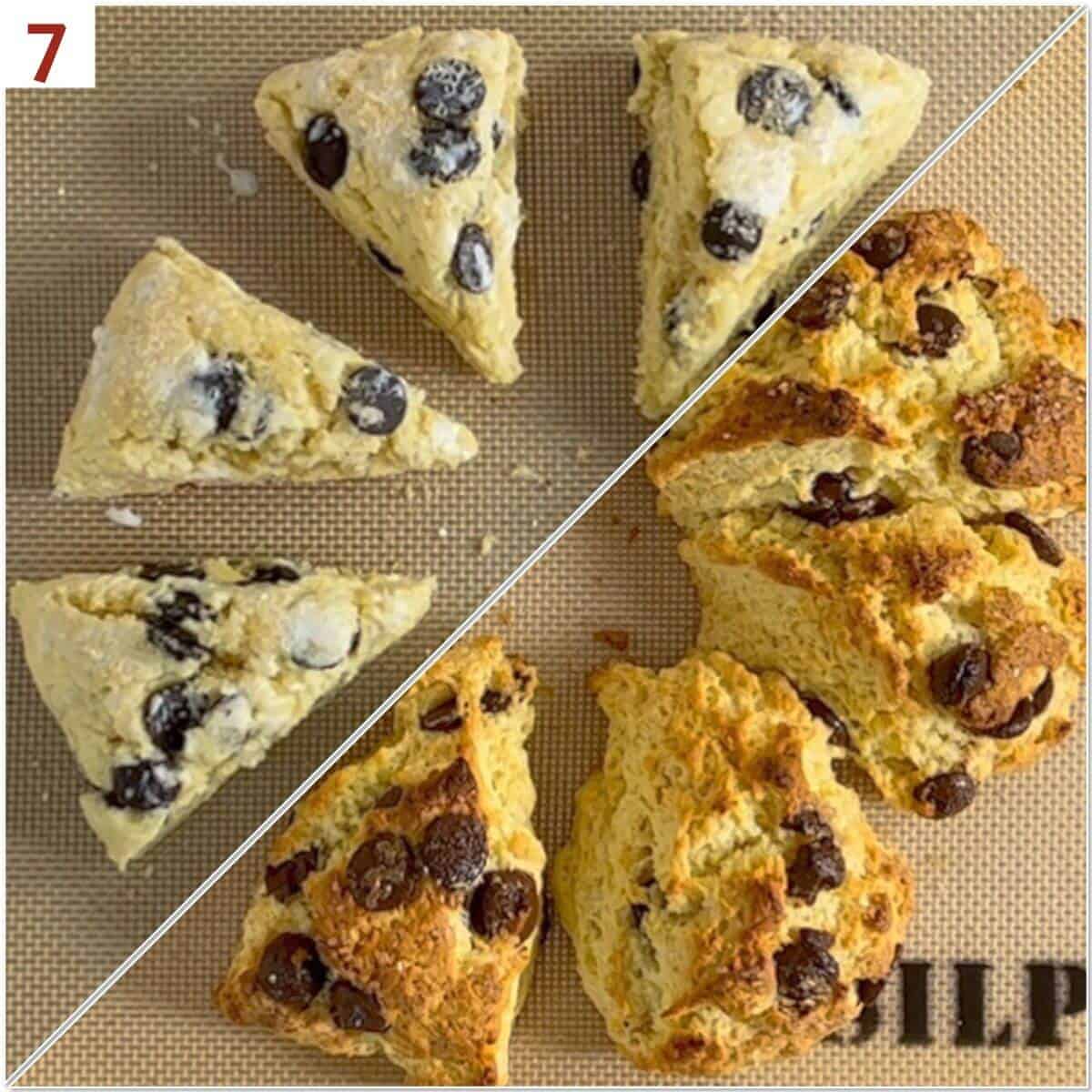
Step 5: Glaze the scones
If you want to ice the scones with a glaze, you can use milk or cream to make your glaze, or choose a flavored liquid to complement your other ingredients. An example is using orange juice for these Orange Cranberry Scones.
Whisk the powdered sugar and the flavored liquid in a bowl until smooth. Adjust the consistency by adding 1 teaspoon of liquid or more sifted powdered sugar as needed. Drizzle the glaze on the still-warm scones and allow to set for a few minutes.
Storage and make-ahead instructions
Storage Instructions: Scones are best enjoyed right away, though leftover scones keep well at room temperature or in the refrigerator for about 3 to 5 days. Glazed or plain scones freeze well, up to 3 months. Thaw overnight in the refrigerator then warm to your liking before serving.
Make-ahead instructions: For freshly baked scones anytime, freeze the cut, unbaked scones in a ziplock bag. Take out as many as you want to bake (there's no need to defrost them first), and bake at 375 °F for 20 to 25 minutes.
Yield Notes
The yield is generally about 8 scones (that's what I get from a circle cut into wedges or with a 3-inch round cookie cutter), and up to 12 (cutting the square scones). Your yield may vary.
What goes with scones?
Why, homemade lemon curd and clotted cream, of course! Or make this strawberry jam recipe to serve alongside the scones.
I've also seen whipped cream, butter, crème fraîche, and various fruit jams, jellies, and preserves at teas I've attended. No rules!
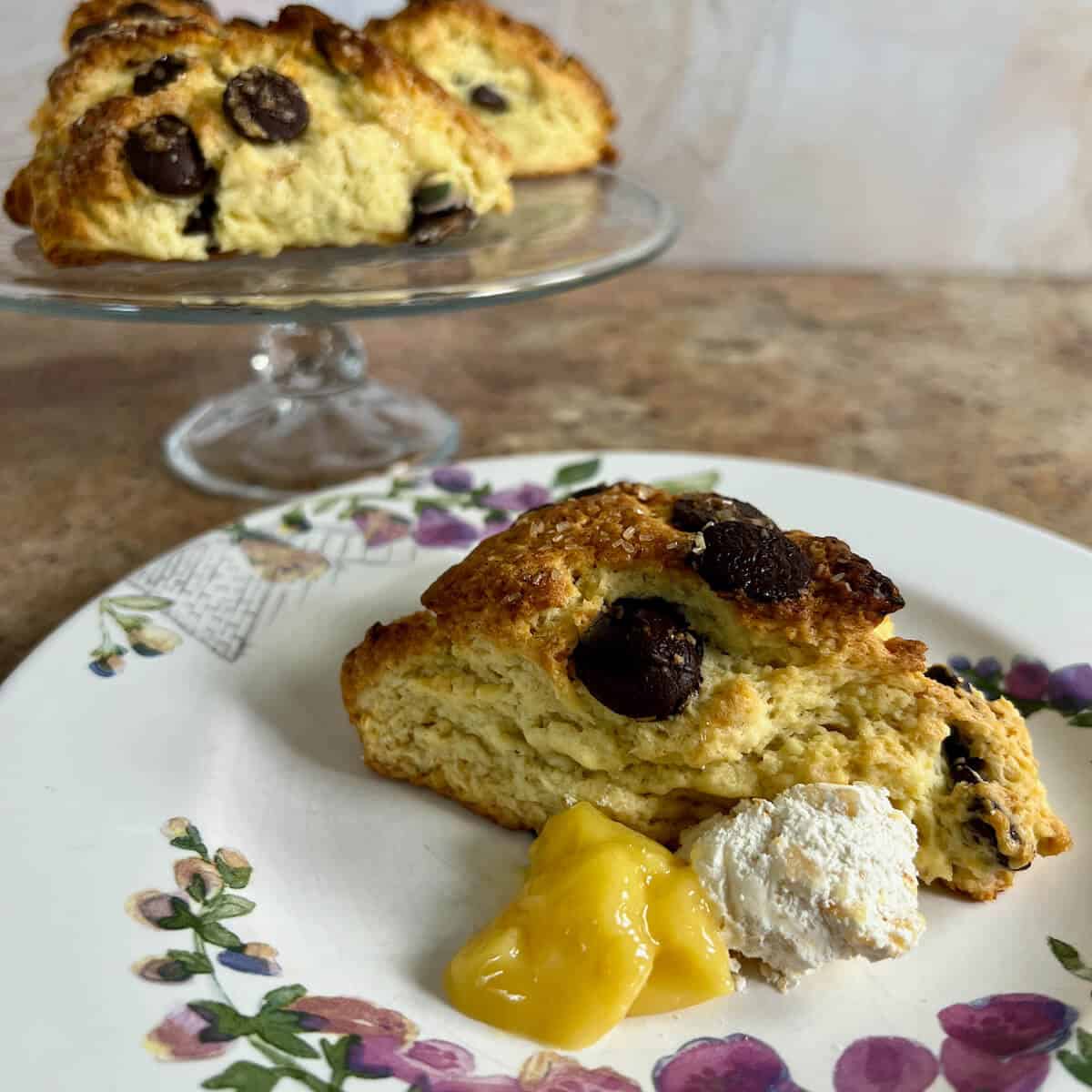
Questions asked and answered
Here are some questions you might have...
Recipe ratios are an easy way to remember the basic building blocks for many items. The concept comes from Chef Michael Ruhlman's book, Ratio: The Simple Codes Behind the Craft of Everyday Cooking book. For example, the recipe ratio for a pie crust is as easy as 3 : 2 : 1 (3 parts flour, 2 parts fat, and 1 part liquid) by weight (using a kitchen scale comes in handy here). This post takes a deeper dive into how to use recipe ratios in cooking and baking.
Biscuits fall under a 3 : 1 : 2 ratio, 3 parts flour, 1 part fat, and 2 parts liquid. A cream scone is just an enriched biscuit, meaning eggs are included in the measurement of the liquid (in this case, heavy cream) for richness and tenderness. And just as with making pie crust, it's important to keep everything chilled as you go.
The best way to make sure you have scone success is to be sure not to over-work the scone dough by cutting in the butter too much. You want the dough to have pea-sized chunks of butter that you can see. Chilling the dough right before baking also helps to firm up the butter before baking.
Why? Like with biscuits, cold chunks of butter in the dough ensure that the scone will have the texture you want. This is because when the scones bake, the steam created by the water in the butter evaporating makes the flaky, crumbly texture that scones are known for.
Technically, yes, you can use baking soda in scones. You'll have to make sure that there is some sort of acid for the baking soda to react with in order for it to leaven the scone dough, like buttermilk or lemon juice. Use about ¼ of the amount of the baking powder so the scones don't have a metallic taste.
Funny you should ask, because I did leave out the baking powder one time and this was the result: flat, unappealing scones with a tough texture. The baking powder works to create lift in the oven, and contributes to the overall soft and crumbly texture you want.
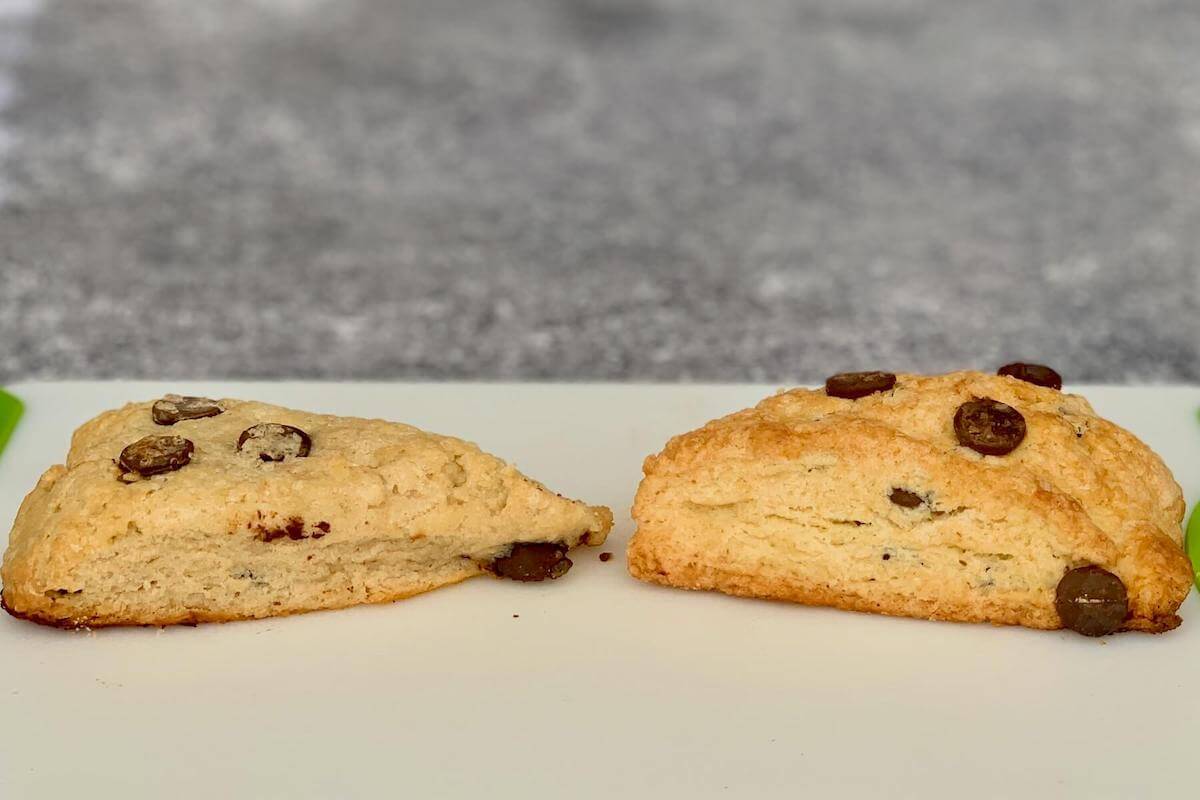
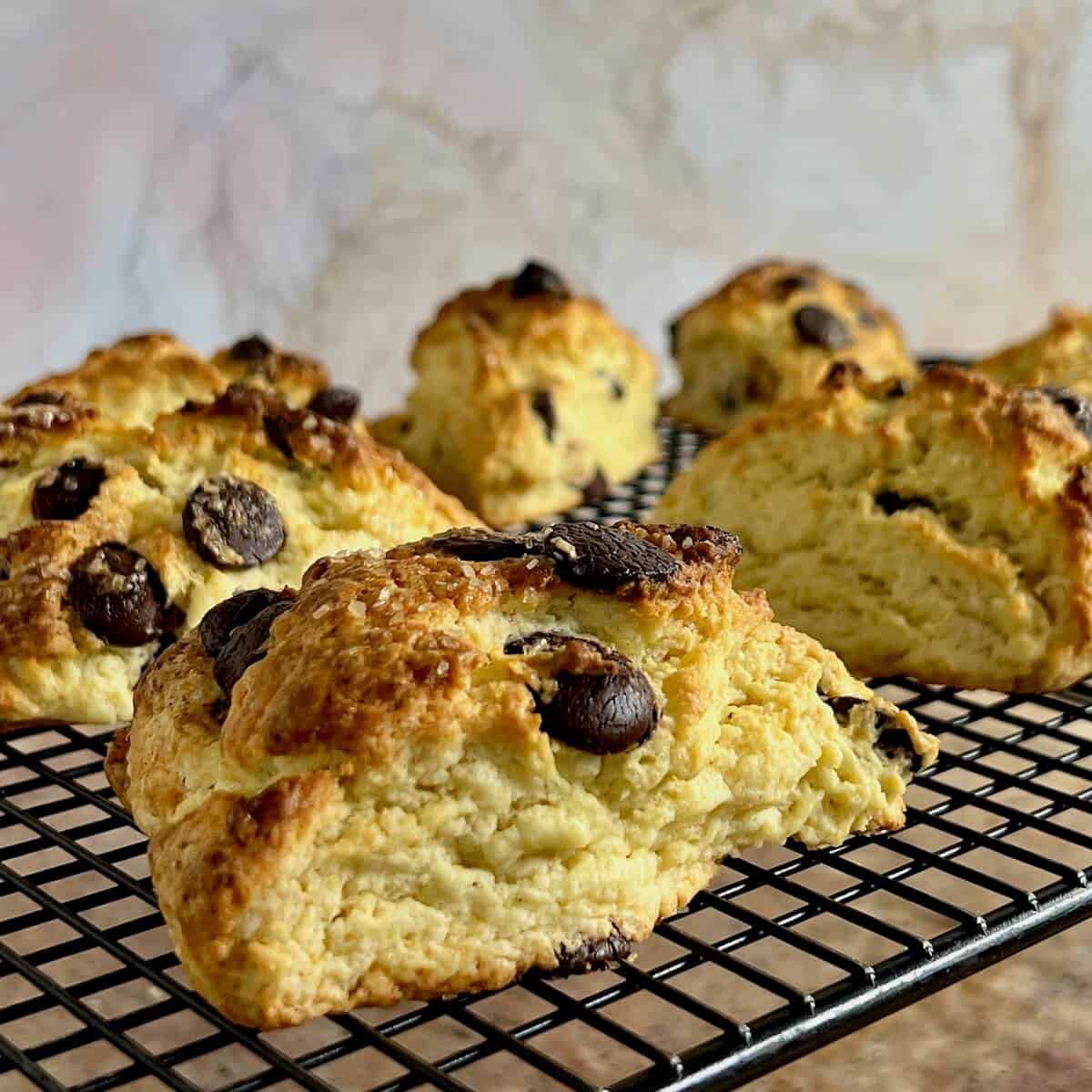
More scone & condiment recipes to try
Recipe
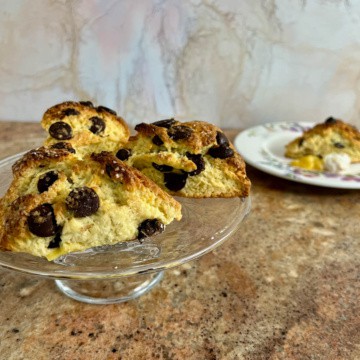
Cream Scones
Equipment
- box grater if butter is frozen
- 3-inch round cookie cutter or your choice of size and shape, optional
Ingredients
For the scones
- 2 cups all-purpose flour
- ¼ cup granulated sugar, or to taste
- 1 tablespoon baking powder
- 1 teaspoon kosher salt
- 6 tablespoons unsalted butter, very cold or frozen, see Recipe Notes
- ½ cup heavy cream, plus extra for brushing on top, see Recipe Notes
- 1 large egg, beaten
Additional flavoring options
- 1 teaspoon pure vanilla extract, or another flavoring, see Recipe Notes
- 1 cup mix-ins, see Recipe Notes
- coarse sugar, or another topping, for sprinkling, optional
For the glaze (optional)
- ½ cup powdered sugar
- 1 to 2 tablespoons flavored liquid, see Recipe Notes
Instructions
- Preheat the oven to 400 °F. Line a half baking sheet pan with a Silpat silicone mat or parchment paper. Set aside.
- Make the dough: In a large bowl, combine the flour, sugar, baking powder, and salt.
- If the butter is frozen, grate it using a box grater. Otherwise, cut the butter into small cubes.
- Toss the butter into the flour mixture to coat, then use a pastry blender, two forks, or your hands to work the butter into the flour until coarse, pea-sized crumbs appear. Don't overdo this step as you don't want the butter to warm up and mix completely into the flour.
- In a small bowl, whisk together the heavy cream, egg, and vanilla (if using).
- Slowly add the heavy cream mixture to the flour mixture and mix until the dough just holds together. Using a bowl scraper will help to combine the dough in the bowl without your hands warming up the butter, plus you can see any crumbs at the bottom that still need to be mixed in. The amount of the heavy cream mixture to add depends on the humidity of the day. Squeeze a small amount of dough between your fingers, and add more of the cream mixture or flour, 1 tablespoon at a time (2 tablespoons maximum), if it's too crumbly or too wet. Remember, do not over mix the dough - you want to keep that butter cold and separate from the flour.
- Use the bowl scraper to push the dough into a ball in the bowl, then turn the dough out onto a lightly floured surface and shape it into a rough square about 1-inch high.
- Add any mix-ins: If you're adding in a mix-in (like chocolate chips) to your scones, place a few pieces on the top of the disk, then fold the dough over them. Flatten the dough and reshape into a disk. Do this "fill and fold" method a few times until you have enough layers of your mix-in incorporated into the dough. This method is similar to how to fold in mix-ins for bread dough, too.
- Gather the dough, and flatten it into a 6-inch disk (if you want square scones, shape the dough into a rectangle with the short side about 4-inches long). Use a bench scraper to release the dough, if needed. Cover with plastic wrap, and refrigerate the dough at least 30 minutes or up to overnight.
- Once the dough is chilled, you have your choice of how to shape the scones:For wedge-shaped scones: Roll out the disk into an 8-inch circle, then use the bench scraper to cut the disk into 8 wedges. For round scones: Roll out the disk to a height of about ¾ inches. Use a 3-inch round cookie cutter to cut out rounds (gather, press, and cut the leftover dough again as needed, but hopefully not more than 2 times).For square scones: Roll out the dough into a 12- by 4-inch rectangle, then cut into twelve 2-inch squares.
- Place the scones about 2-inches apart on the prepared baking pan. Press in the reserved mix-ins on the tops of the scones. Brush the tops of each scone with heavy cream and sprinkle with coarse sugar.
- Bake for about 18 to 23 minutes or until golden brown. Remove from the oven and cool the scones on the baking pan for 2 minutes, then move to a cooling rack. Allow to cool for 10 to 15 minutes.
- For the optional glaze: Whisk the powdered sugar and the flavored liquid in a bowl until smooth. Adjust the consistency by adding 1 teaspoon of liquid or more sifted powdered sugar as needed.
- Place the cooling rack back on the baking pan to catch the drips. Drizzle the glaze on the and allow to set. See the Recipe Notes for instructions for a richer glaze.
- Serve warm or at room temperature. Pair them with lemon curd and clotted cream for a lovely combination. Enjoy!
- Storage Instructions: Scones are best enjoyed right away, though leftover scones keep well at room temperature or in the refrigerator, stored in an airtight container, for about 3 to 5 days. Glazed or plain scones freeze well, in an airtight bag, for up to 3 months. Thaw overnight in the refrigerator then warm to your liking before enjoying.
- Make-ahead instructions: For freshly baked scones anytime, freeze the cut, unbaked scones in a ziplock bag. Take out as many as you want to bake (there's no need to defrost them first), and bake at 375 °F for 20 to 25 minutes.
- The yield is generally about 8 scones (that's what I get from a circle cut into wedges or with a 3-inch round cookie cutter), and up to 12 (cutting the square scones). Your yield may vary.
Notes
- Flavored liquids (instead of heavy cream): Buttermilk, eggnog, or a non-dairy milk alternative
- Mix-ins: Chocolate chips (or other flavored chips), dried fruit, finely, chopped nuts (toasted if desired), or even sprinkles
- Extracts (in addition to or instead of the vanilla): ¼ teaspoon almond, mint, orange, lemon, or Fiori di Sicilia extracts
- Toppings: Coarse sugar adds a nice crunch to the scones, but it's not strictly necessary. You can vary the toppings with other things like sprinkles or chopped nuts
- Glaze: You can use milk or cream to make your glaze, or choose a flavored liquid to complement your other ingredients

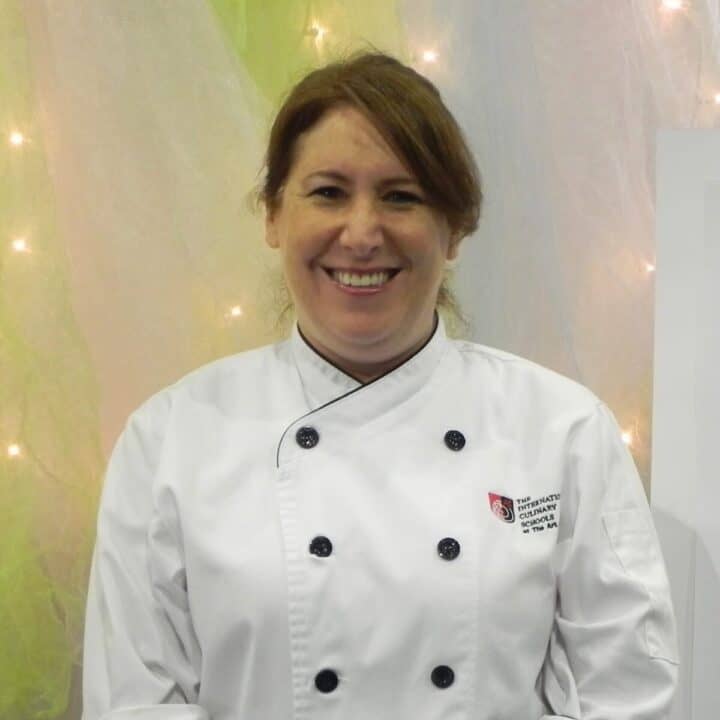
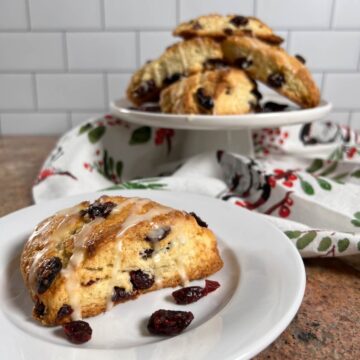
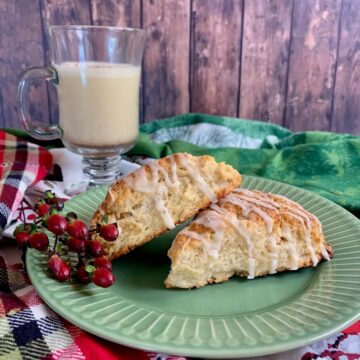
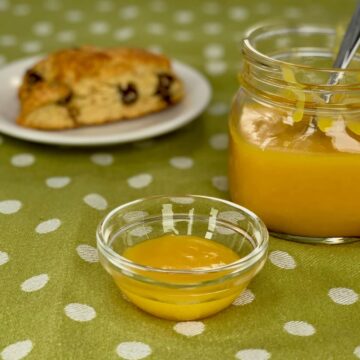
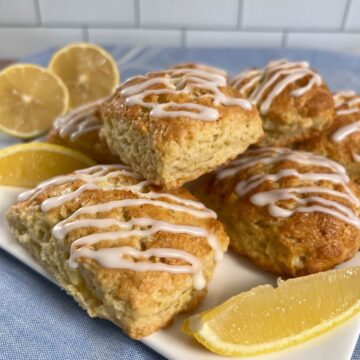
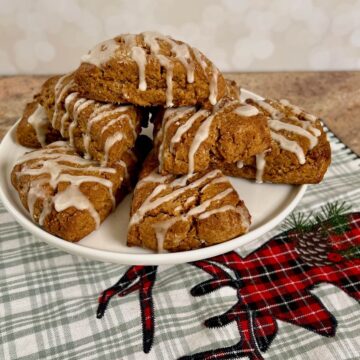
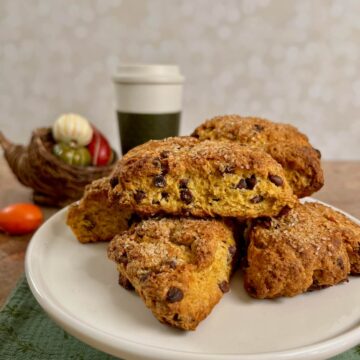
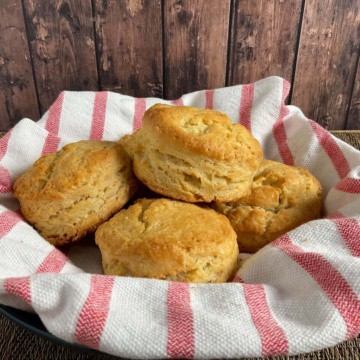
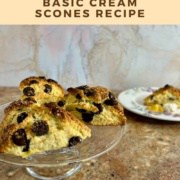
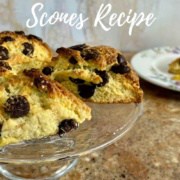
Teri says
I make cranberry, walnut orange scone but my recipe doesn’t have an egg in it either. I then make an orange glaze to put over it. So so good.
Tammy Spencer says
Sounds delicious, Teri!
Leslie says
I just made this recipe for a zoom tea I plan to have with my son and his girlfriend tomorrow. The scones are so delicious, I’m hoping that I have a few left when it’s time for tea! Thank you so much!
Tammy says
Wonderful! I hope you have fun at your tea. Enjoy! 😉
Tammy Cooper says
I re-read the tea reasoning - love it!
Keep up the blogging!
Enjoyed our visit and catching up!
Tammy